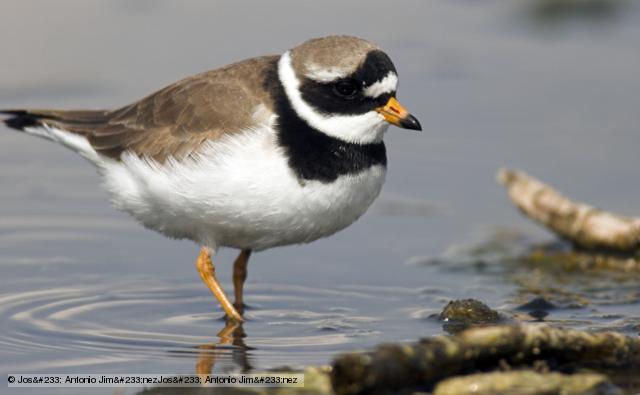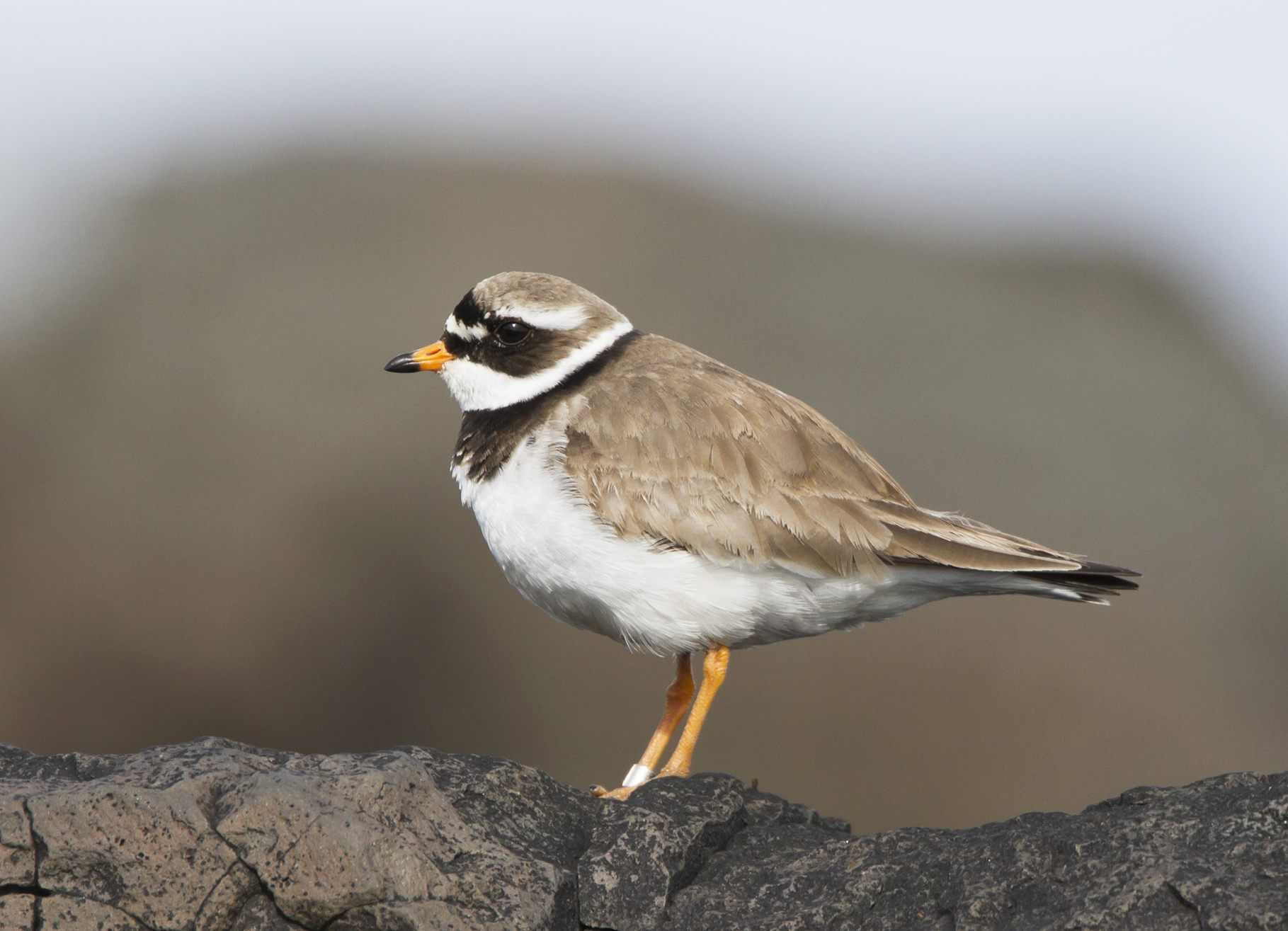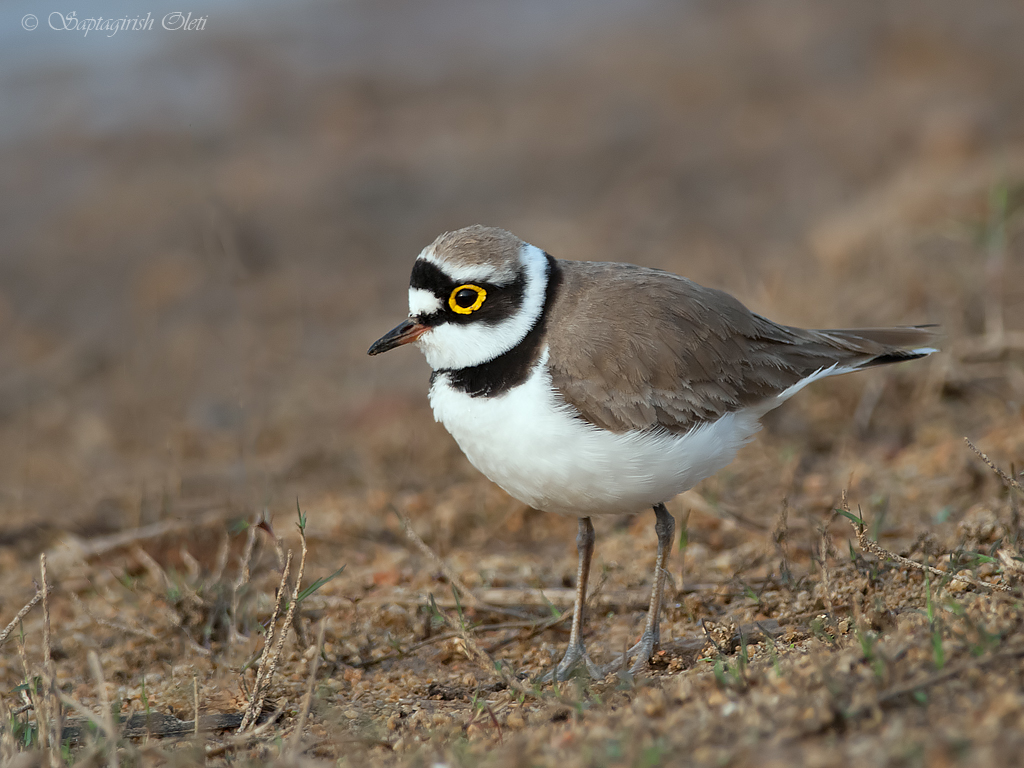
Charadrius hiaticula
SUBFAMILY
Charadriinae
TAXONOMY
Charadrius hiaticula Linnaeus, 1758. Two subspecies.
OTHER COMMON NAMES
English: Common ringed plover; French: Grand Gravelot;
German: Sandregenpfeifer; Spanish: Chorlito de Collar, Chorlitejo
Grande.
PHYSICAL CHARACTERISTICS
7–8 in (18–20 cm). Males in breeding season: 2–2.54 oz (57–72
g); females 1.98–2.65 oz (56–75 g). Upperparts, including
crown, are sandy brown. Neck has a black ring with a white
ring above it. White underparts, forehead, and superciliary
line. Dark frontal bar and line running under the eye from the
bill. In breeding male, bill is orange with black tip. Legs orange.
DISTRIBUTION
Breeds from northeastern Canada east to northeastern Siberia
and winters in Africa, southern Europe, the Persian Gulf, and
India.
HABITAT
Coastal during the breeding season, selecting nesting sites on
beaches, near coastal tundra ponds, or on muddy plains. Rarely
nests along rivers and occasionally found away from water. Favors
nest sites near high tide mark on sandy or shingled
beaches. On migration and during winter found along
seashores and coastal marshes where vegetation is low or occasionally
in dry open areas. May be found on coral reefs exposed
at low tide.
BEHAVIOR
Outside of the breeding season most often seen in small flocks
of up to 50 birds, but occasionally solitary and may also be
seen in large flocks of up to 1,500 birds. Aggressive to neighbors
on wintering grounds.
FEEDING ECOLOGY AND DIET
As is typical of plovers, it forages by running, stopping, lunging,
and then running on. Foot patting or trembling is common.
Forages during the day and at night. Eats a variety of
invertebrates.
REPRODUCTIVE BIOLOGY
Strongly territorial during breeding season. Nesting densities
are typically low with fewer than one pair per hectare, but contiguous
nesting territories of about 98 ft (30 m) in diameter occur.
Birds may mate with the same partner in consecutive
breeding seasons. Some birds arrive on breeding territory already
paired. Both sexes incubate eggs and care for chicks. A
clutch of four eggs is laid in a hollow in the sand. The nest is
often lined with small pebbles. Incubation requires about 25
days, and birds fledge at about 23 days. Both sexes engage in
injury feigning displays. Commonly double brooded, especially
in southern populations. Nest sometimes reused, but new sites
as much as 1,640 ft (500 m) from the first may be chosen.
CONSERVATION STATUS
Populations are healthy and some populations in England and
Scotland are expanding their ranges inland.
SIGNIFICANCE TO HUMANS
None known.
Other popular Animals
Photo Gallery of - Ringed plover




 Animalia Life
Animalia Life